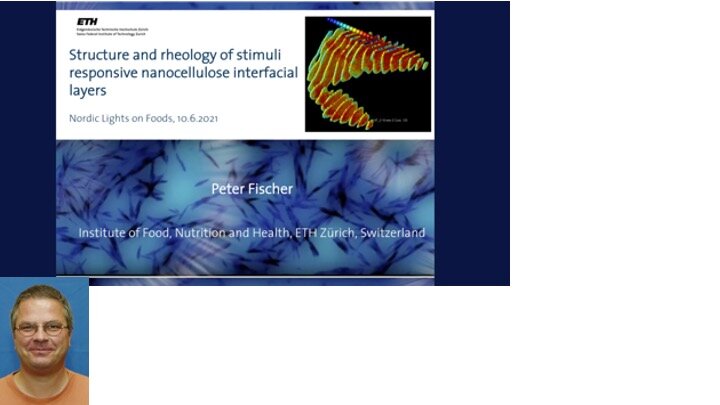Abstract
The use of particles such as nanocelluloses, i.e. cellulose nanocrystals (CNC) and nanofibrils (CNF) received increasing attention for the Pickering stabilization of fluid interfaces [1]. The adsorption of nanocellulose and nanocellulose-protein composites at oil-water or air-water interfaces facilitates the formation of stable and biocompatible emulsions and foams but depends heavily on the particles’ surface properties. In this contribution, we review the structure of differently designed adsorption layers by neutron reflectivity and interfacial rheology measurements as a function of physico-chemical boundaries conditions (pH, salts, enzymes) [2, 3], surface properties of the cellulose crystals (natural, methylation, esterification) [4, 5], and protein or polysaccharide addition [6]. Native unmodified CNC (hydrophilic, negatively charged, and anisotropic nanoparticles) showed negligible viscoelasticity that could be increased by charge screening due to a shift from repulsive to attractive CNC interactions. Methylated CNCs formed dense monolayers with higher dynamic moduli compared to native CNCs and could be thermo-gelled into multilayers. The esterified CNCs formed aggregated clusters at the interface, resulting in a Maxwellian frequency behavior with distinctive relaxation times, a rarely observed phenomenon for interfacial layers. Scattering length density profiles obtained from neutron reflectivity measurements are used to elucidate the thickness and roughness of the adsorption layer, and in case of nanocellulose-protein composites, their spatial composition. Supported by in vivo digestion experiments in humans we rationalize the design principles of nanocellulose-stabilized emulsions and foams for food and drug delivery vehicles [7].
[1] Bertsch P, Fischer P: Adsorption and interfacial structure of nanocelluloses at fluid interfaces, Advances in Colloid and Interface Science 276 (2020) 102089
[2] Bertsch P, Fischer P: Interfacial rheology of charged anisotropic cellulose nanocrystals at the air-water interface, Langmuir 35 (2019) 7937.
[3] Scheuble N, Geue T, Windhab EJ, Fischer P: Tailored interfacial rheology for gastric stable adsorption layers, Biomacromolecules 15 (2014) 3139.
[4] Bertsch P, Diener M, Adamcik J, Scheuble N, Geue T, Mezzenga R, Fischer P: Adsorption and interfacial layer structure of unmodified nanocrystalline cellulose at air/water interfaces, Langmuir 34 (2018) 15195.
[5] van den Berg MEH, Kuster S, Windhab EJ, Adamcik J, Mezzenga, R, Geue T, Sagis LMC, Fischer P: Modifying the contact angle of anisotropic cellulose nanocrystals: Effect on interfacial rheology and structure, Langmuir 34 (2018) 10932.
[6] Scheuble N, Lussi M, Geue T, Carriere F, Fischer P: Blocking gastric lipase adsorption and displacement processes with viscoelastic biopolymer adsorption Layers, Biomacromolecules 17 (2016) 3328.
[7] Scheuble N, Schaffner J, Schumacher M, Windhab EJ, Liu D, Parker H, Steingoetter A, Fischer P: Tailoring emulsions for controlled lipid release: Establishing in vitro-in vivo correlation for digestion of lipids, ACS Appl. Mater. Interfaces 10 (2018) 17571.






















